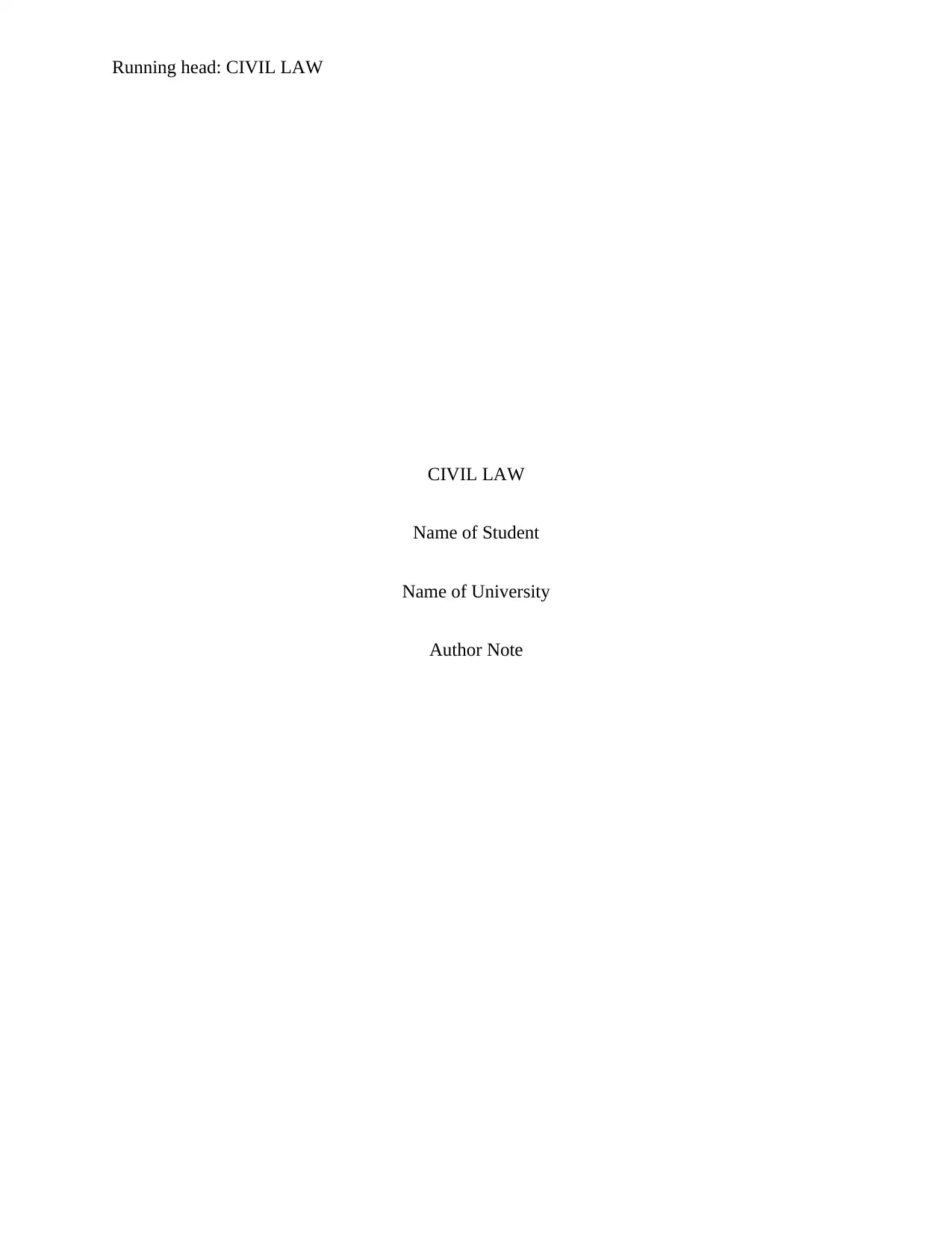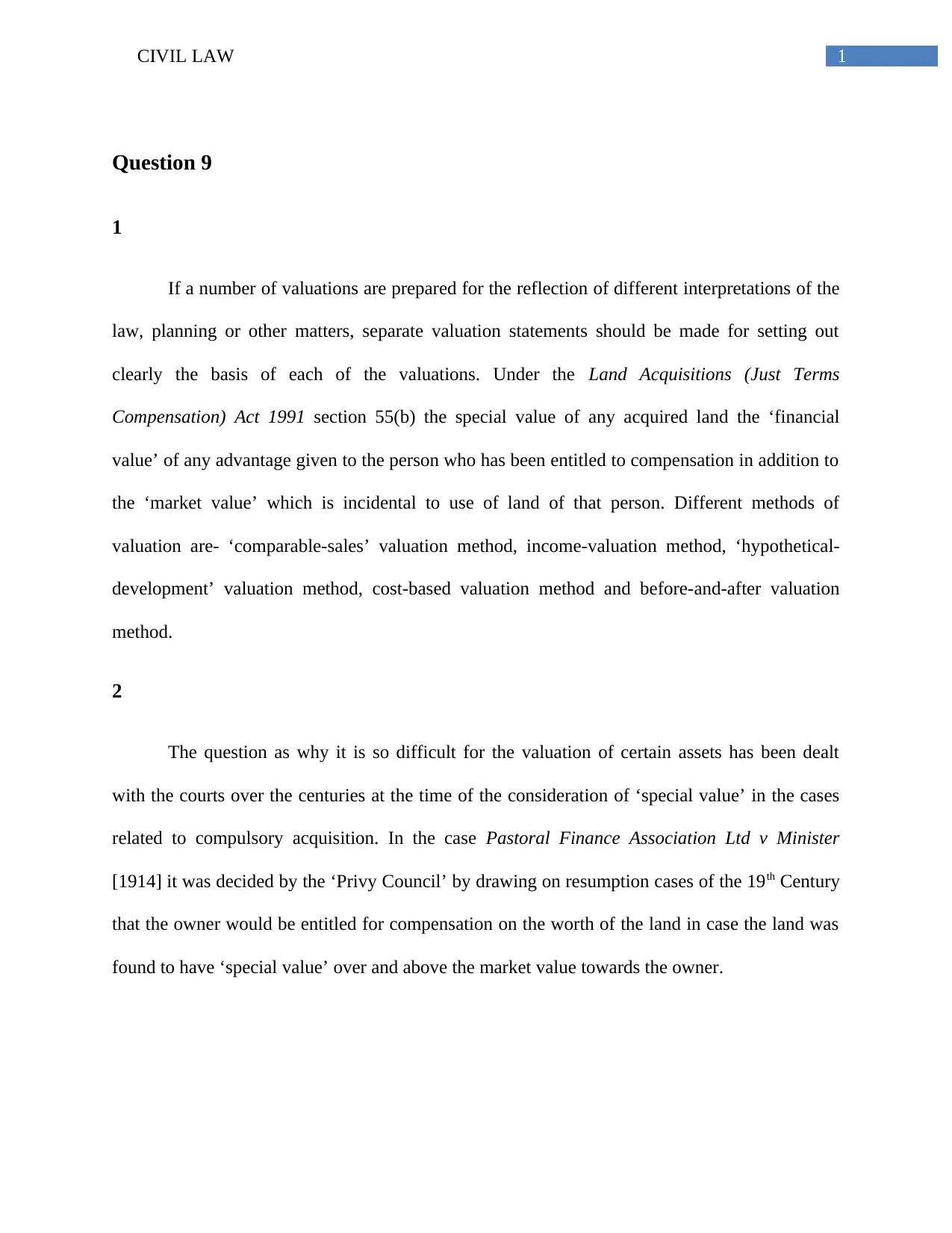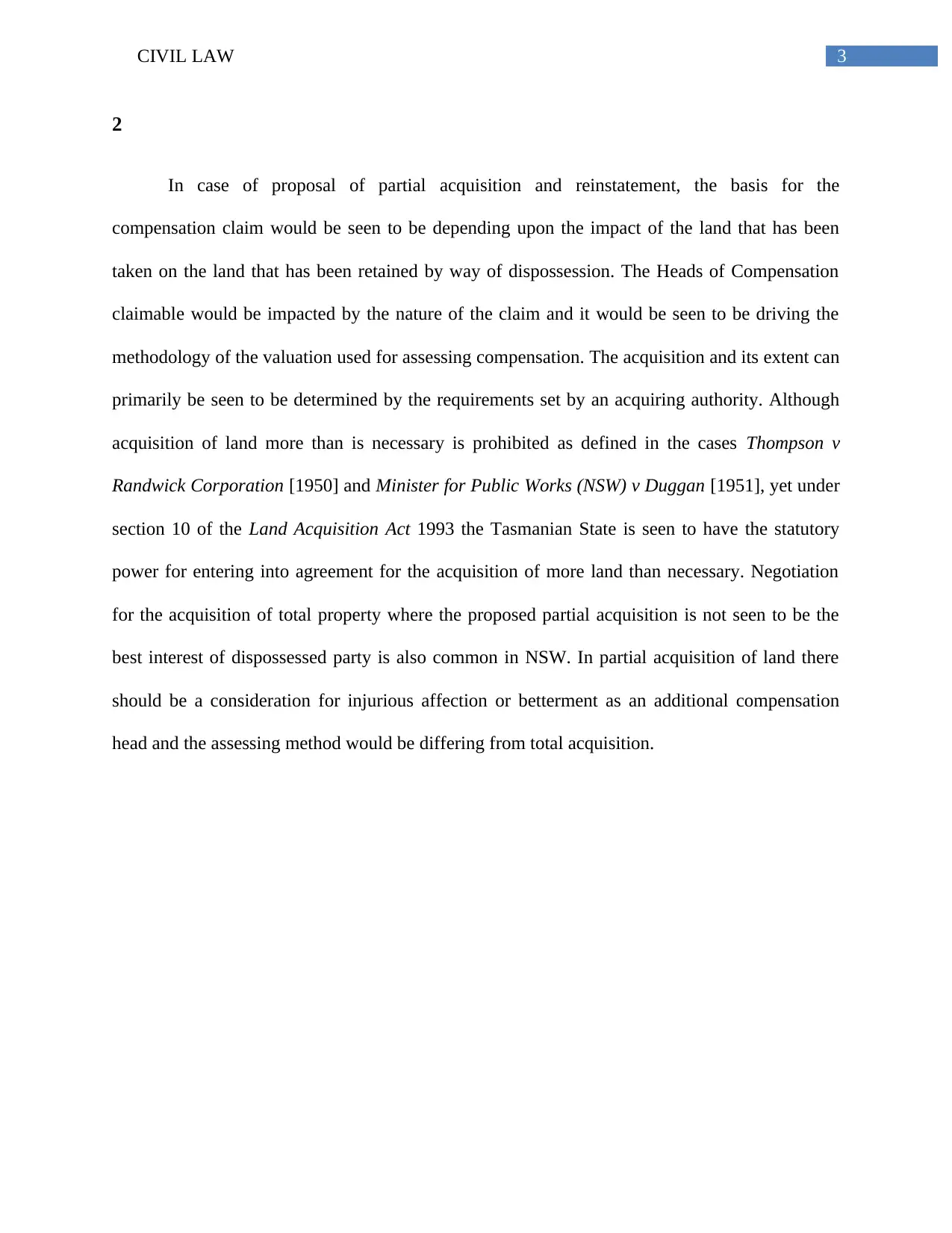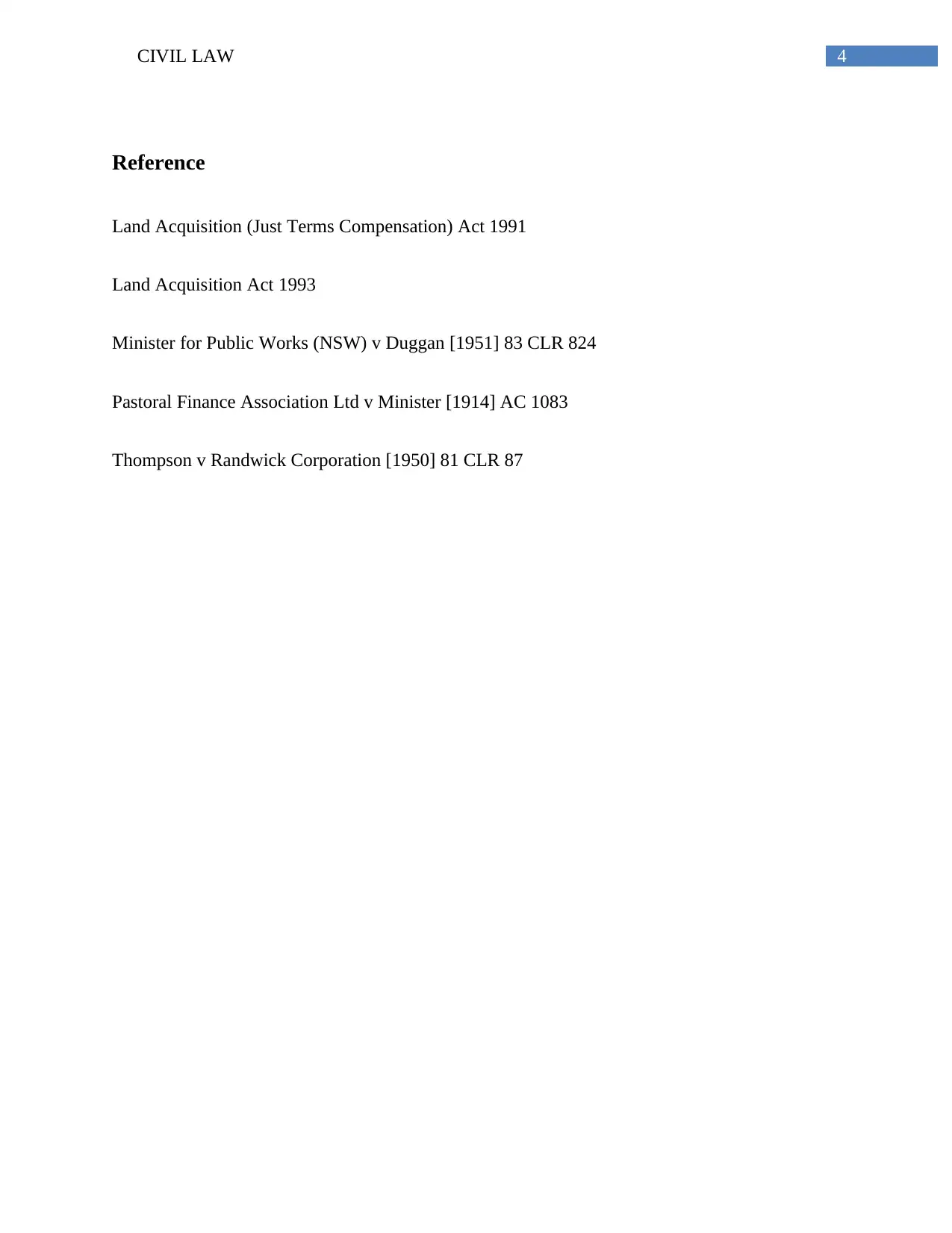Civil Law: Analysis of Land Acquisition Compensation Act 1991
VerifiedAdded on 2022/11/24
|5
|779
|333
Homework Assignment
AI Summary
This assignment provides a detailed analysis of civil law principles related to land acquisition and compensation, focusing on the Land Acquisitions (Just Terms Compensation) Act 1991 and the Land Acquisition Act 1993. It addresses different valuation methods, including comparable-sales, income-valuation, hypothetical-development, cost-based, and before-and-after methods, emphasizing the complexities in determining 'special value' and compensation. The assignment further examines the concepts of disturbance, severance of land, and solatium, outlining the legal costs, financial costs, and non-financial disadvantages associated with land acquisition. It explores partial acquisition scenarios, the assessment of injurious affection or betterment, and the statutory powers of the Tasmanian State. The document references key legal cases such as Pastoral Finance Association Ltd v Minister, Thompson v Randwick Corporation, and Minister for Public Works (NSW) v Duggan to support its analysis.
1 out of 5












![[object Object]](/_next/static/media/star-bottom.7253800d.svg)